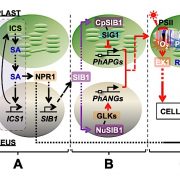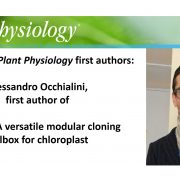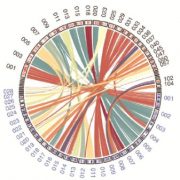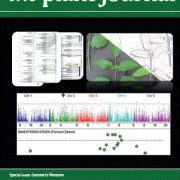
Recognizing Plant Cell first authors: Raul Huertas
Blog, The Plant Cell, The Plant Cell: Author ProfilesRaul Huertas, first author of Arabidopsis SmE1 regulates plant development and response to abiotic stress by determining spliceosome activity specificity
Current Position: Postdoctoral Fellow, Noble Research Institute, Admore, Oklahoma, USA
Education: Ph.D. in Plant Science, Universidad de Granada…

Recognizing Plant Physiology first authors: Jennifer Andres
Plant Physiology, Plant Physiology: Author ProfilesJennifer Andres, first author of Synthetic switches and regulatory circuits in plants
Current Position: PhD student, Institute of Synthetic Biology & CEPLAS, Heinrich-Heine-Universität Düsseldorf, Germany
Education: B.Sc. and M.Sc. in Biology, with the focus on Microbiology and Biotechnology
Non-scientific…

Recognizing Plant Physiology first authors: Tim Blomeier
Plant Physiology, Plant Physiology: Author ProfilesTim Blomeier, first author of Synthetic switches and regulatory circuits in plants
Current position: PhD Student, Heinrich-Heine-University, Institute of Synthetic Biology & CEPLAS, Düsseldorf, Germany
Education: M. Sc. Biology with a major in Synthetic Biology and Biotechnology (Heinrich-Heine-University,…

Recognizing Plant Physiology first authors: Daniel Wangpraseurt
Plant Physiology, Plant Physiology: Author ProfilesDaniel Wangpraseurt, first author of Optical properties of corals distort variable chlorophyll fluorescence measurements
Current Position: Marie Curie Fellow, University of Cambridge, UK
Education: PhD University of Technology, Sydney, Australia. MSc Max Planck Institute for Marine Microbiolgy…

Differential expression of plant cell nuclear and plastid genes triggers a new mechanism of plant immune response
The Plant Cell, The Plant Cell: NewsSource: Molecular Plant Science Excellence Innovation Center / Institute of Plant Physiology and Ecology Release time: 2019-01-21 Translated from the original.
On January 4th, the international academic journal The Plant Cell published a paper from the research group of the Institute of Plant and…

Recogniziang Plant Physiology first authors: Alessandro Occhialini
Plant Physiology, Plant Physiology: Author ProfilesAlessandro Occhialini, first author of MoChlo: A versatile modular cloning toolbox for chloroplast
Current position: Postdoctoral research scientist at the department of Food Science, University of Tennessee UTK (Knoxville, USA)
Education: PhD degree in plant cellular biology, at the University of…

EDITORIAL The Plant Cell celebrates 30 years of publishing the best work in plant biology
Blog, Pubs Pages, The Plant Cell, The Plant Cell: News
By Sabeeha S. Merchant, Nancy A. Eckardt and Nancy Winchester
As Bob Goldberg, founding editor, noted upon the 20th anniversary of The Plant Cell in 2009 (Vol. 21, pp. 3–12), 1989 was a year of major change: not just for the world (“the Iron Curtain came down, the Berlin Wall crumbled, the…

A smut fungus of Brassicaceae plants uses conserved and unique strategies to manipulate perennial hosts ($) New Phytol.
Plant Science Research WeeklyBiotrophic phytopathogens manipulate living hosts for the procurement of nutrients essential for growth and reproduction. It is therefore critical for invading biotrophs to evade or suppress immune responses without impacting overall plant function. In a recent study published in New Phytologist (2019),…

Special Issue: Genome to Phenome (Plant Journal)
Plant Science Research WeeklyIt’s January, which seems to be a month of weather extremes for many “temperate” parts of the globe. Here’s an excellent collection to curl up with as you try to stay warm or cool and out of the elements. The issue includes free-to-access reviews focused on using genomic data (e.g., genome-wide…

